Donnelley Financial ActiveDisclosure
A regulatory SaaS product for facilitating filing to the SEC (Securities and Exchange Commission).
Context
As a financial technology company, Donnelley Financial provides financial workflow SaaS solutions for a range of use cases and scenarios for their clients. Many of their clients trust Donnelley with the integrity and security of their data and leverage Donnelley's services to create, publish, and distribute financial documentation to remain in compliance with their respective governments.
My Role
Product Design
Status
Shipped
Collaboraters
John Lattanzi, Product Designer
Ralph Buan, Product Designer
At-A-Glance
In 2019, Donnelley Financial approached Devbridge/Cognizant seeking the modernization of a legacy product, ActiveDisclosure. Primarily, ActiveDisclosure facilitates filings and regulatory reporting to the SEC, enabling collaboration, auditing, and styling capabilities.
The ActiveDisclosure product is a large ecosystem of capabilities, supported by over 80 engineers, 12 product stakeholders, 5 business analysts, 4 product managers, and 1-2 designers at a given time. In 2024, around 500 technical and front-end features were released, and the design team assisted with 220 design user stories.
I joined the project in late 2023 to assist in new feature development and design for product maintenance. I focused on:
- Design team operations optimization
- New feature development (introducing new feature capabilities for users)
- Existing feature improvement (moving features past MVP)
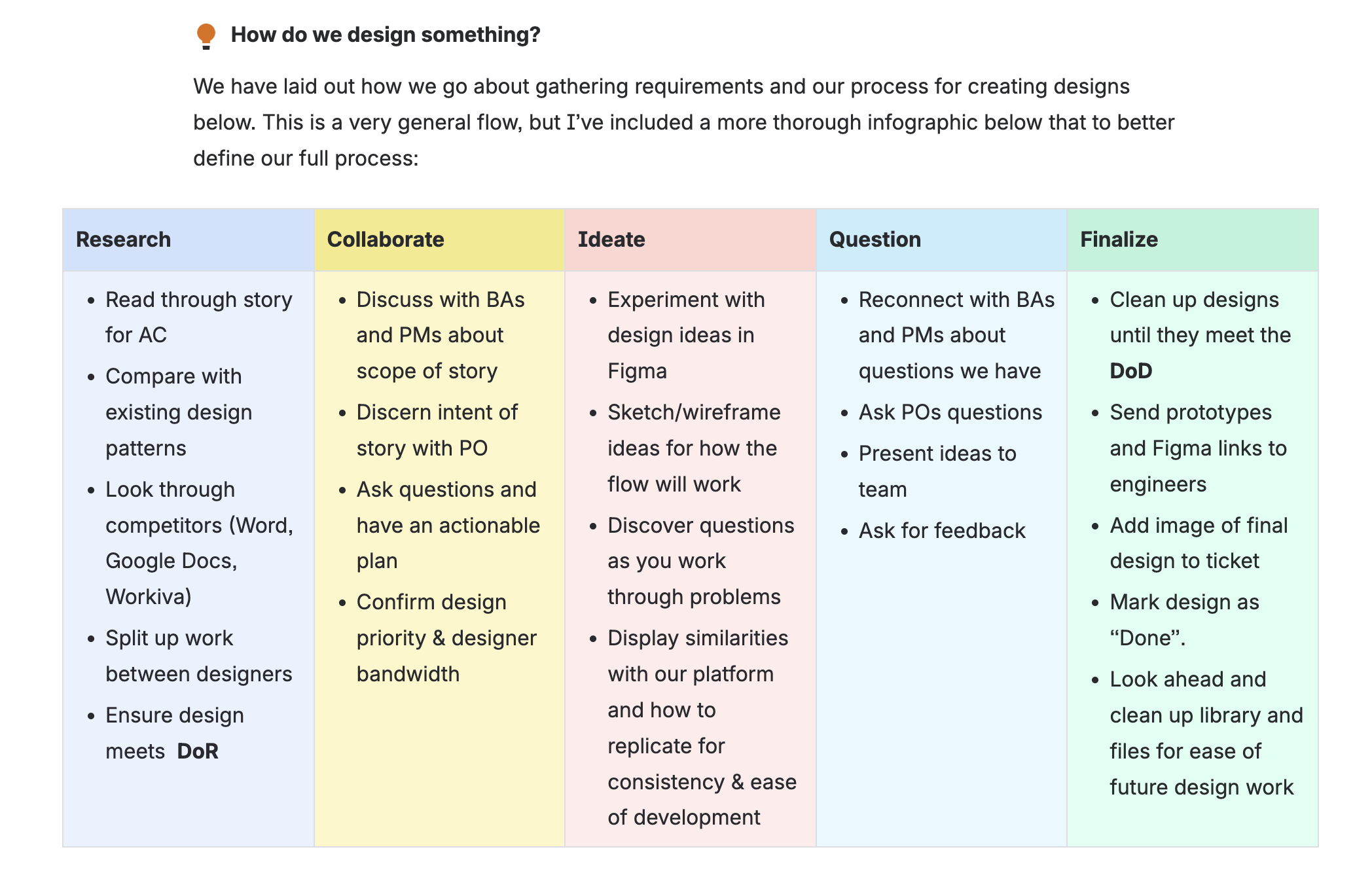
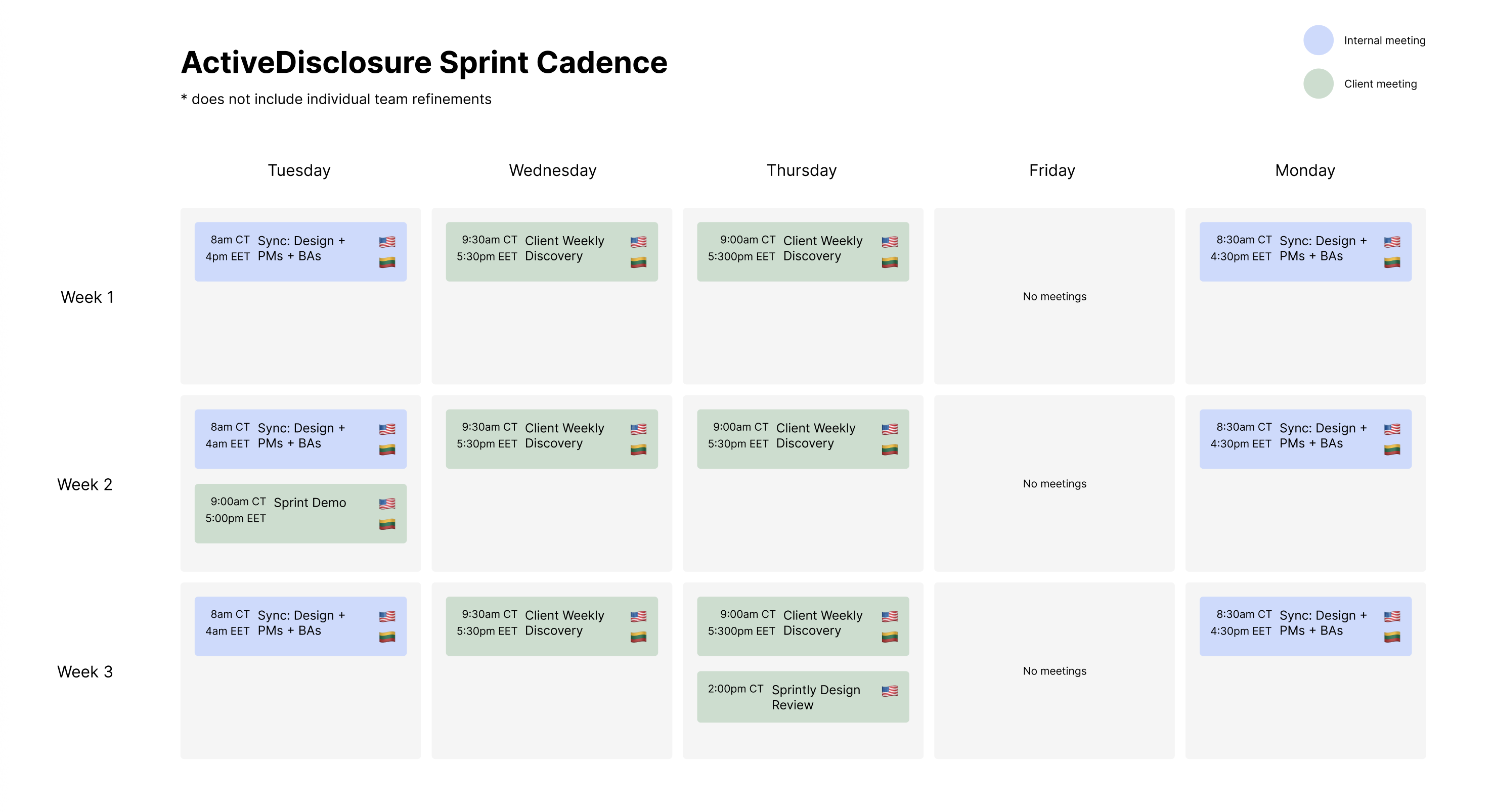
Challenges
While the product rated very mature, challenges were still very much present, both in ways of working and with requested capabilities from the client.
- Team size and output. Managing the requests and delivery of these user stories always provides a capacity planning challenge, given that product stakeholders often re-prioritize or notify the design team of requests last-minute.
- Complexity. ActiveDisclosure end users are financial services and accounting professionals, completing complex, time consuming tasks. They value accuracy and efficiency. Often, a challenge designing for this tool is referencing these traits and finding the balance between simplifying UI and allowing for complexity.
- Privacy. Users have access to sensitive proprietary information, making it difficult to test for usability in live sites. This also adds an additional layer to designing UX and UI, where considering a hidden or private state is an important scenario.
Case Studies
Design Team Operations
Due to the size of feature requests and design work, it was immediately clear that having an organized design system, a process to audit and track design debt, and clear system for stakeholder management was extremley important.
While the existing structure of our product pod helped set up our team for basic design team operations, we could do more to make our working process more efficient.
Addressing an Outdated Design System
Problem
Component library did not accurately reflect current component design in production environments, causing manual rebuild of components in figma designs
The size of the product and quick iterative design sprints also lacked a template library of common screens to expedite the design process.
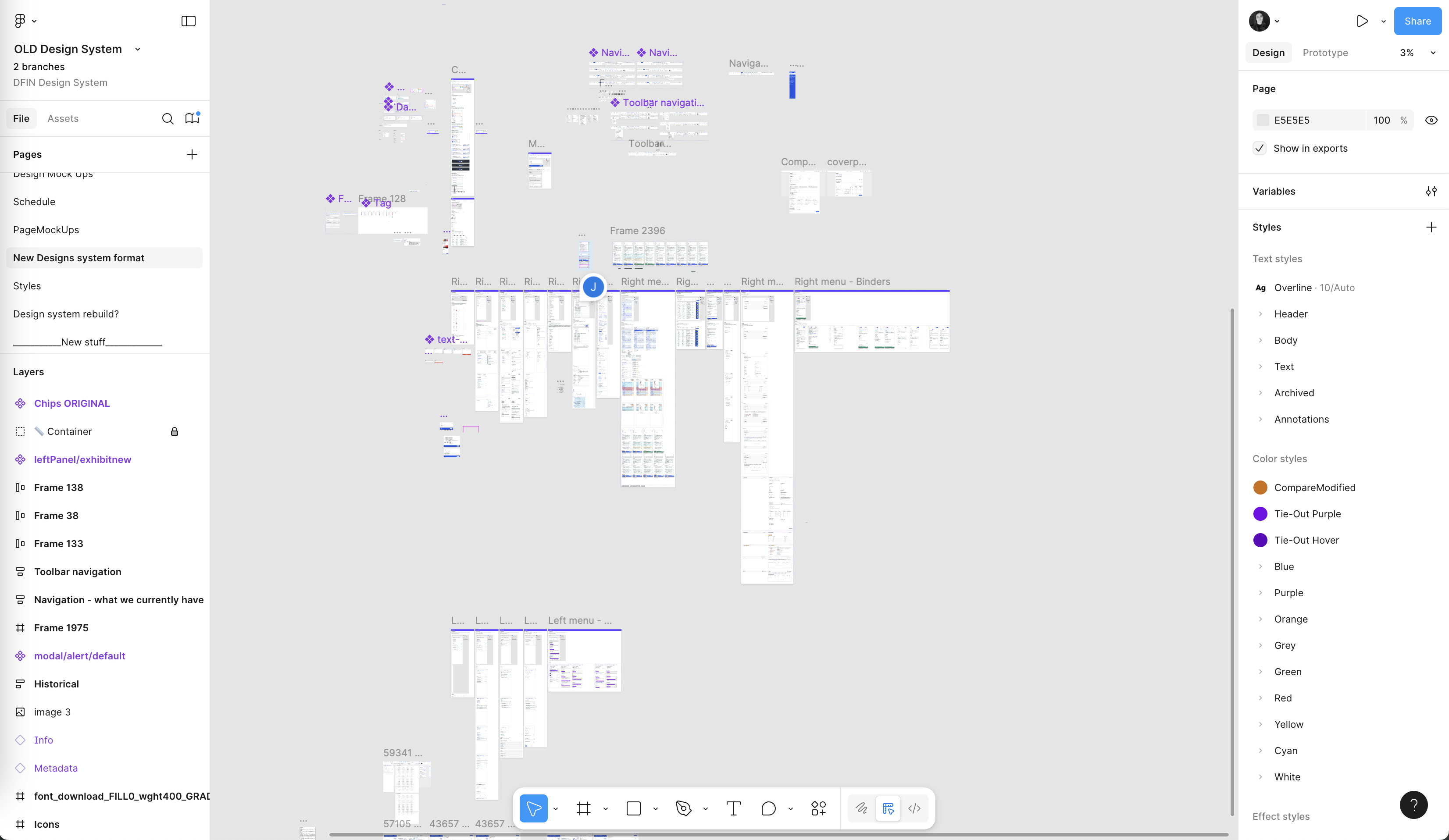
Solution
- Worked among the design team to audit the existing design library and update components to match what was in production.
- We noted any inconsistencies where front end engineers could make improvements and created design debt in our backlog.
- During downtime, we focused on auditing larger screens to create a templated “Starting Place” where other designers could access larger organisms to jumpstart any feature design process.
- Updated governance and guidelines in our design system with the intent to distribute this to stakeholders who run external teams. This would be an invaluable resource to product stakeholders and external engineering teams, providing them with vocabulary for design requests and reviews, and access to design standards.
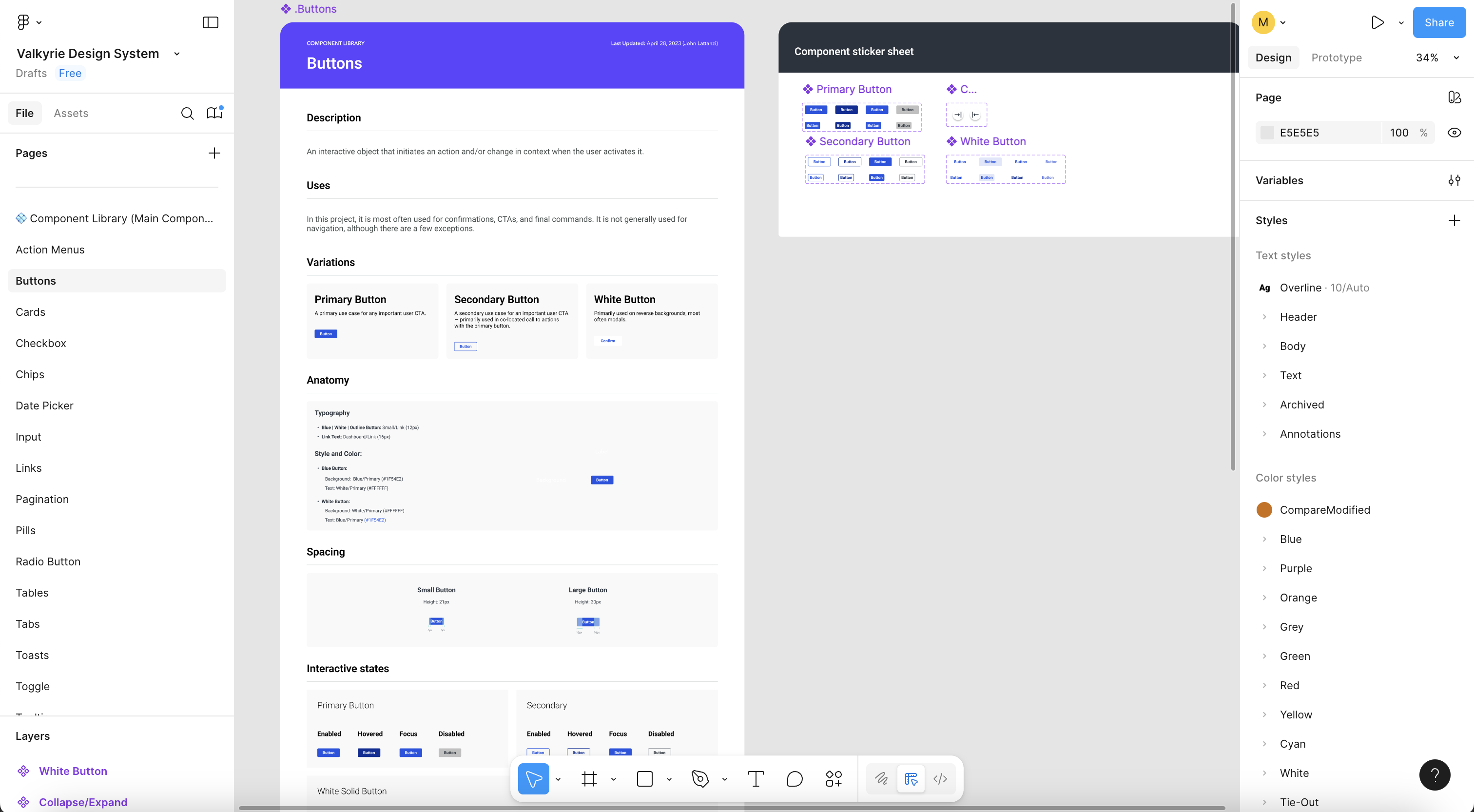
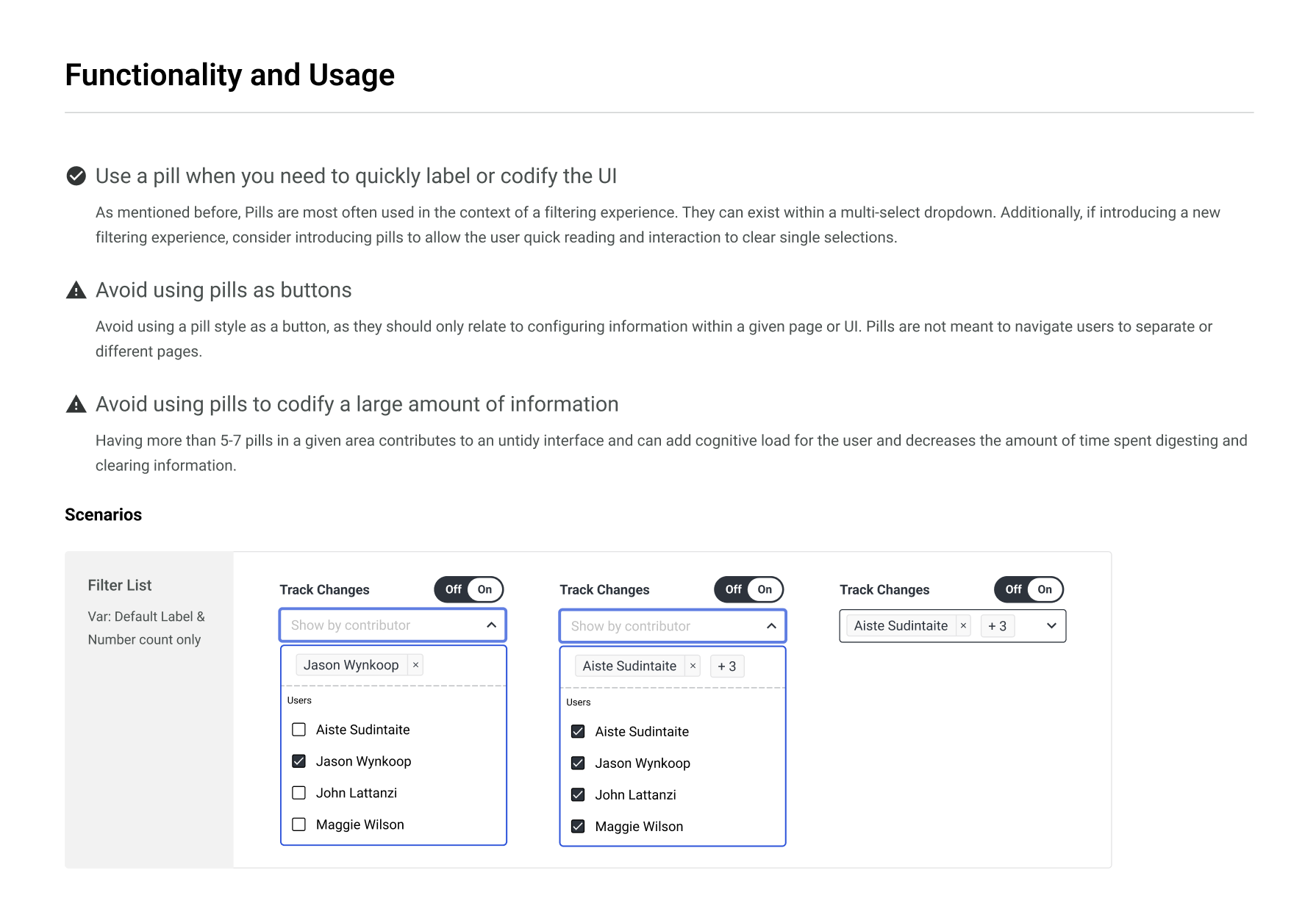
Design Debt
Problem
- The breadth and depth of the product, designer turnover, many teams, and unsynced design system contributed to many inconsistencies among front end components and ux flows.
- Some UX had become outdated and there was a desire to update the interface and other UX flows to match industry standards and fulfill feedback from users.
- A desire to update UI had created some intentional design debt. Thus, tackling how to track work needed to update similar components and schedule those design updates had become a challenge, particularly when facing important technical work, new feature development, or other competing product priorities.
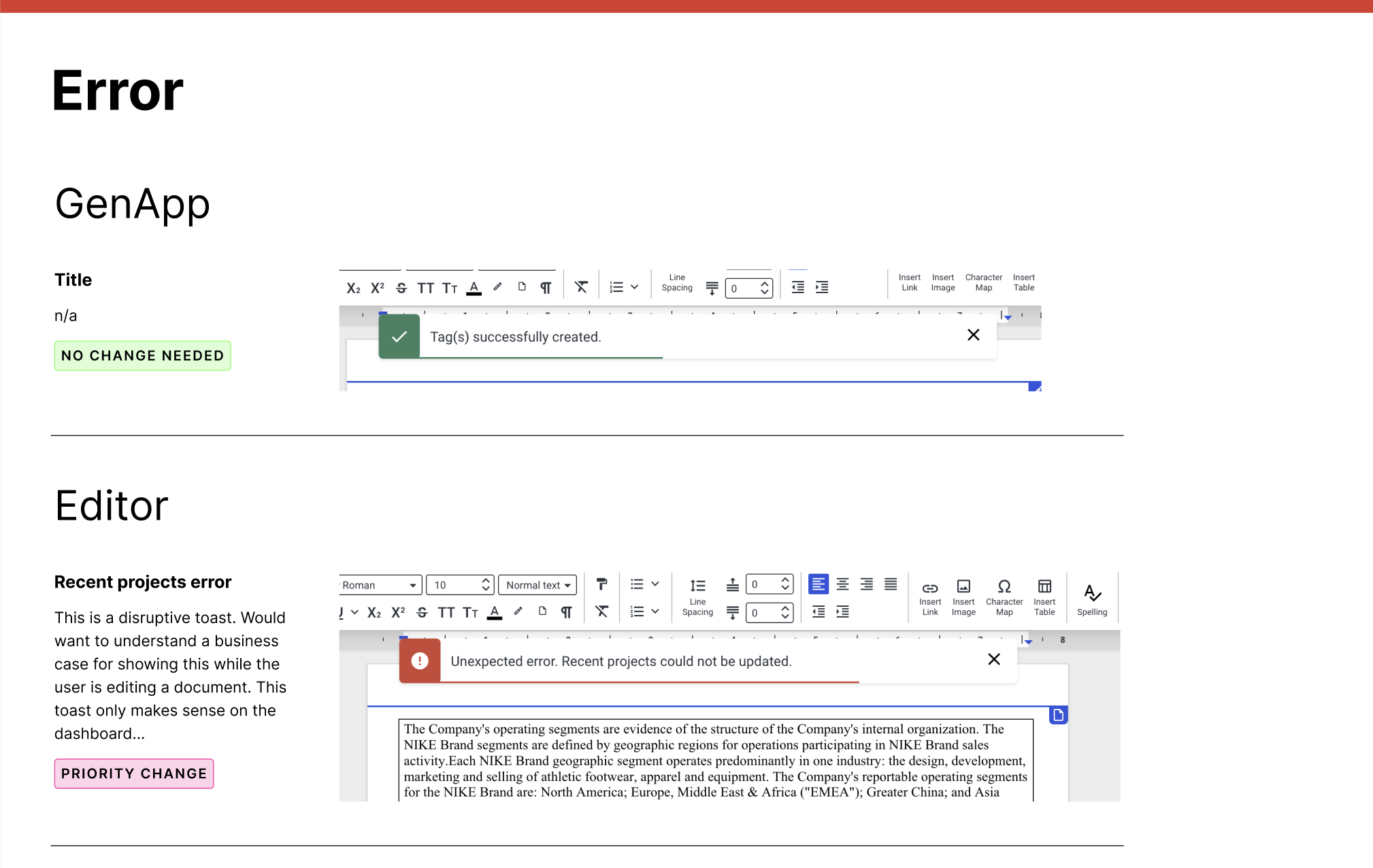 Auditing the product during down periods of delivery work helped to ground newer designers in established UI/UX patterns and expose some potentially problematic experiences.
Auditing the product during down periods of delivery work helped to ground newer designers in established UI/UX patterns and expose some potentially problematic experiences.
Solution
- Begin an audit of the system and track design debt. Initially, we compiled these items in an excel spreadsheet, linking to existing designs, historical user stories, and providing estimates of design work or engineering work necessary.
- Present these items, either en masse, or a selection at a time, to product stakeholders to gain buy-in and feedback. At this point, we would enter design debt items into our work management systems (Azure DevOps or ADO) and parent under our design backlog.
- Moving forward, the system will remove the spreadsheet altogether and automatically place design debt into an unprioritized design debt bucket in ADO. Improved communication and tracking will help push through design debt items and begin removing them from our design backlog and into engineering teams' backlogs.
My Role
- Owning the initial effort
- Setting up the excel audit and refining; owning the design backlog in ADO
- Seeking feedback on effort implementation and organization
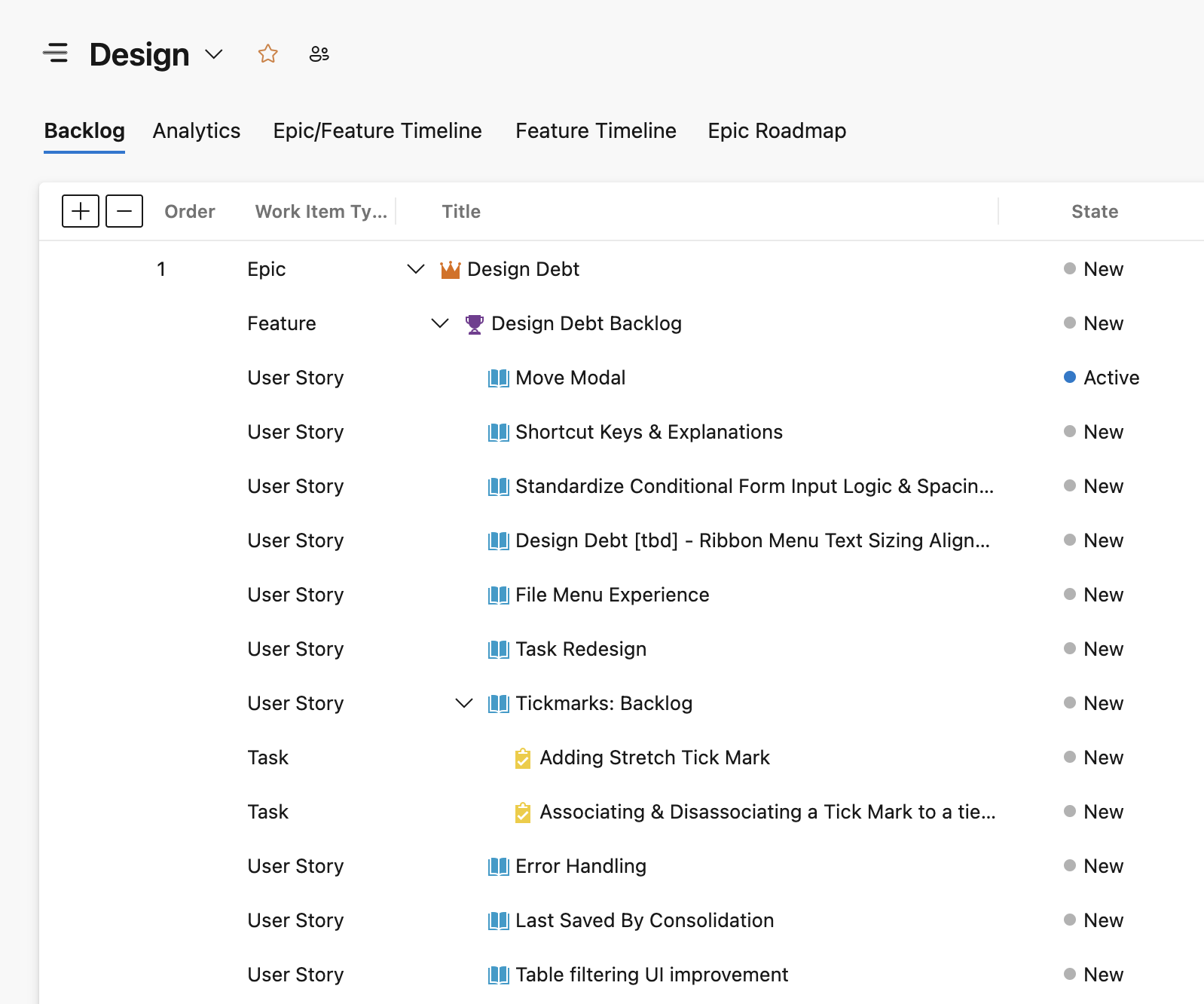 Adding results of various product audits to our ADO backlog formalized our design debt and created space in delivery planning for remediation.
Adding results of various product audits to our ADO backlog formalized our design debt and created space in delivery planning for remediation.
Bulk Actions
As government regulations evolve, publicly traded companies need to disclose more and more to the SEC, requiring the creation and submission of more forms. Ultimately, this creates more burden in keeping an organized tenant, mitigating form errors, and even filing multiples of teh same form, such as for notices of security purchase.
Bulk Filing
Problem
Working with a product stakeholder, feedback from client users revealed that for certain use cases, the ability to mass file multiple forms to the SEC could save up to 20 hours of work and streamline scenarios where checking and understanding filing status was hidden and convoluted.
Users desired the ability to understand the status of all these types of forms and be able to file in bulk with confidence.
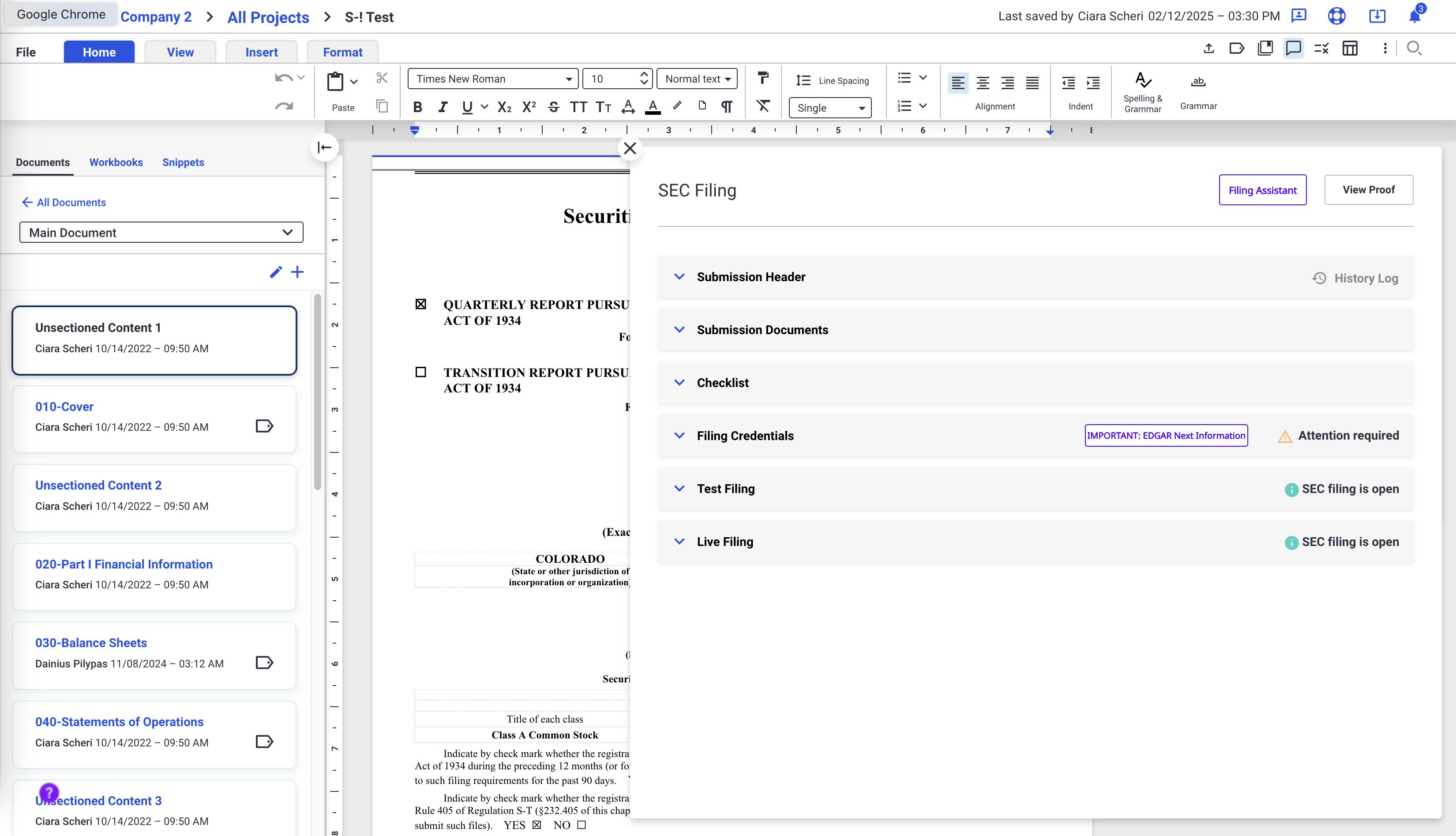
Solution
Building off an existing page design, create a tabular dashboard highlighting statuses, project type and name among other things. Leverage filters for users to facet their search by status to assist them in what is ready for a bulk filing.
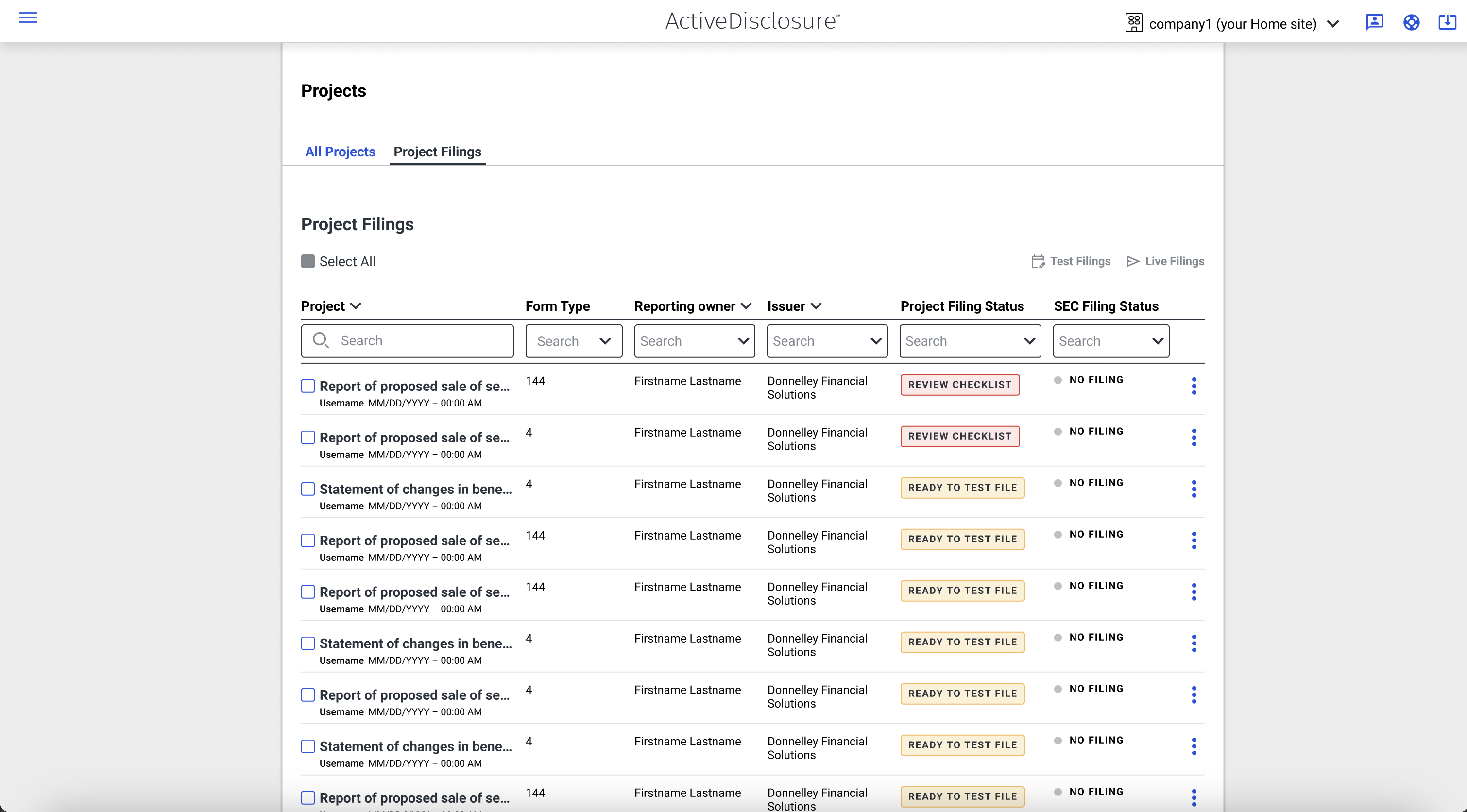
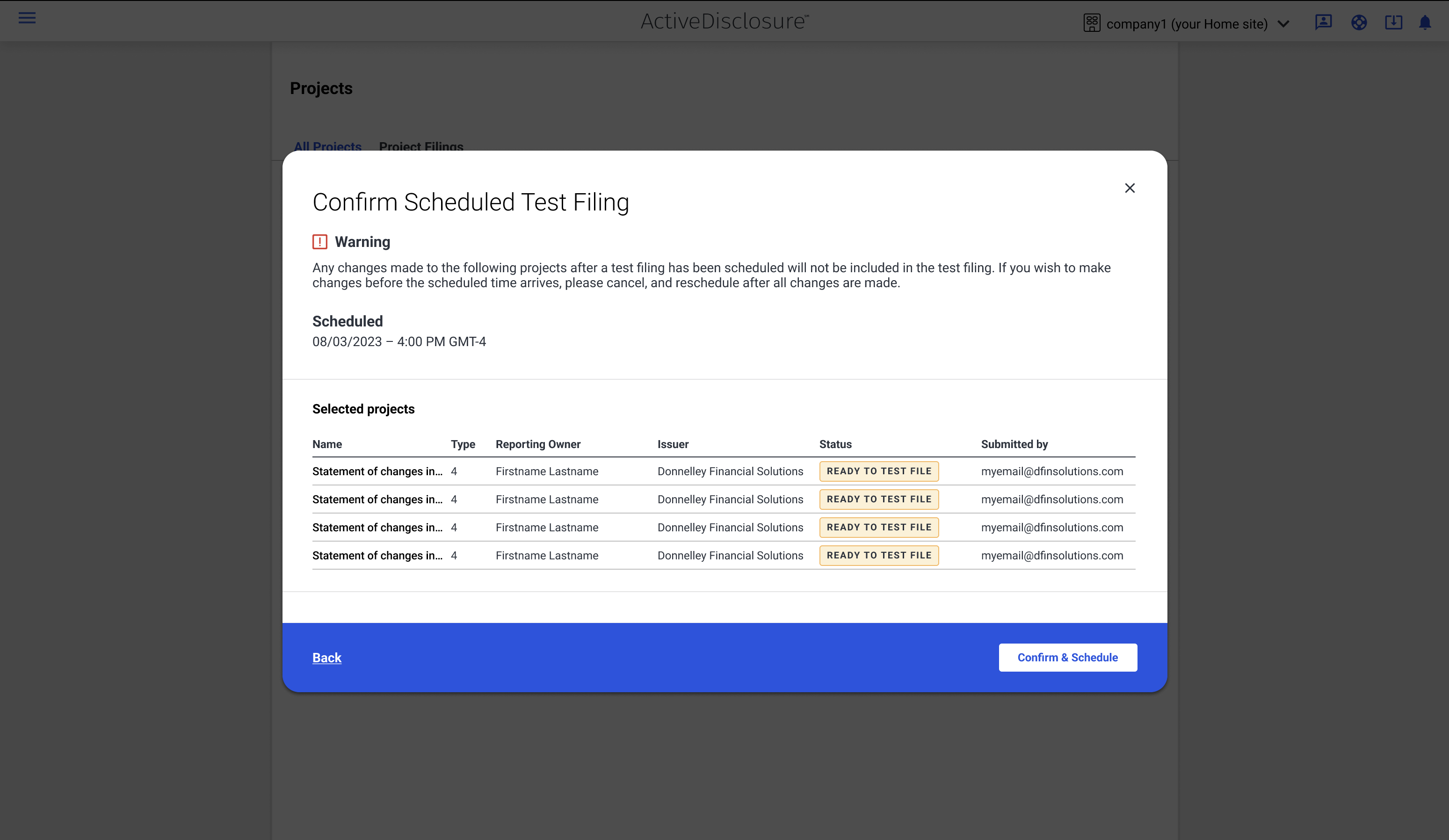
My Role
- Evaluated product feedback and assisted in the refining of this into a user flow and then mockups.
- Reviewed designs with product stakeholders to agree upon a direction.
- Created a working prototype to demo the bulk filing process.
- Demo'd the prototype to a client user to gauge feedback and expectations of the workflow.
Bulk Reconnect
Problem
Working with a product stakeholder, feedback from client services teams exposed gaps in our tagging workflows where financial tables would drop all their tags. Tagging services teams would then have to re-tag the entire table — at times, the scope of this rework could be upwards of 500 tags.
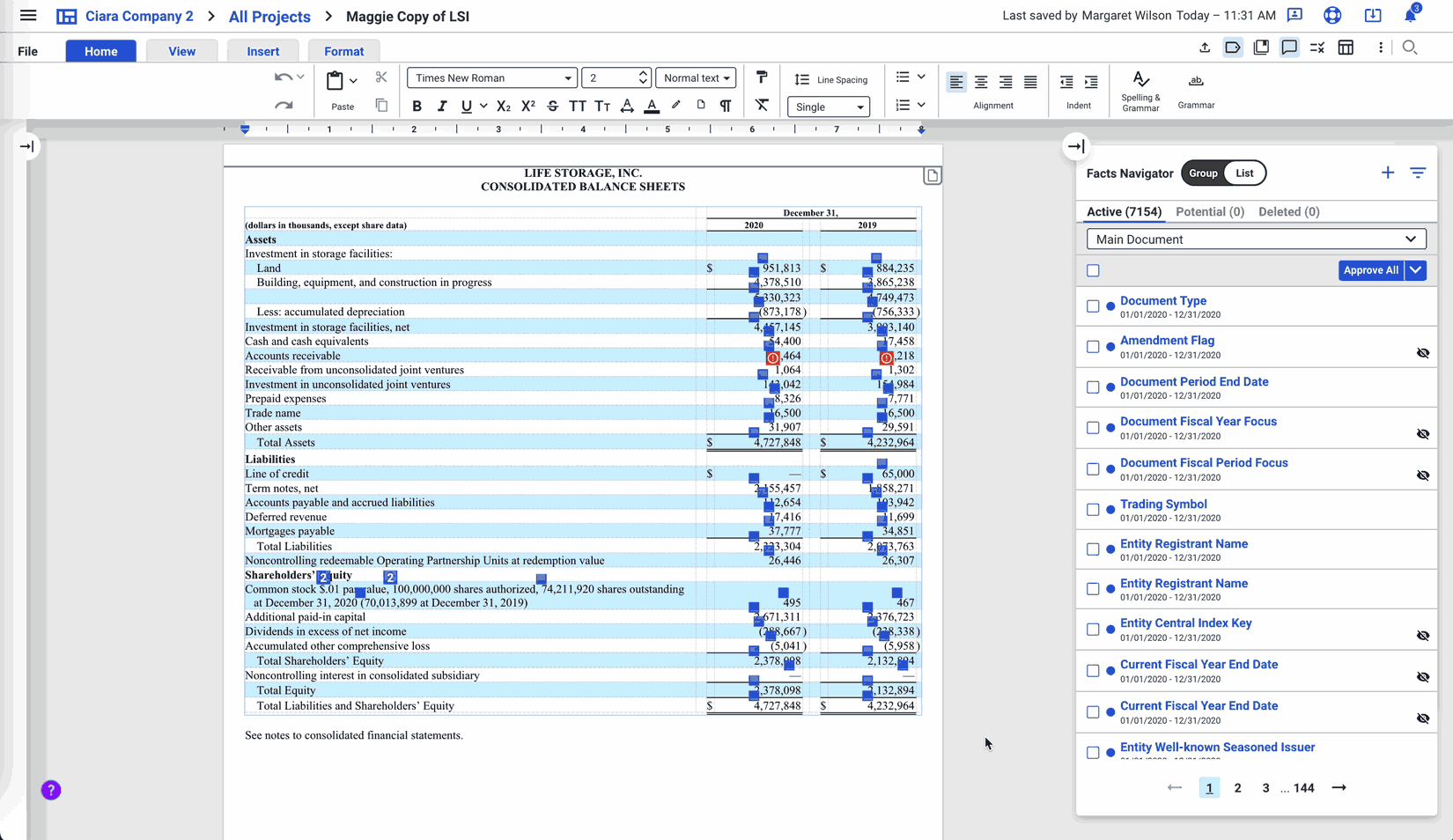
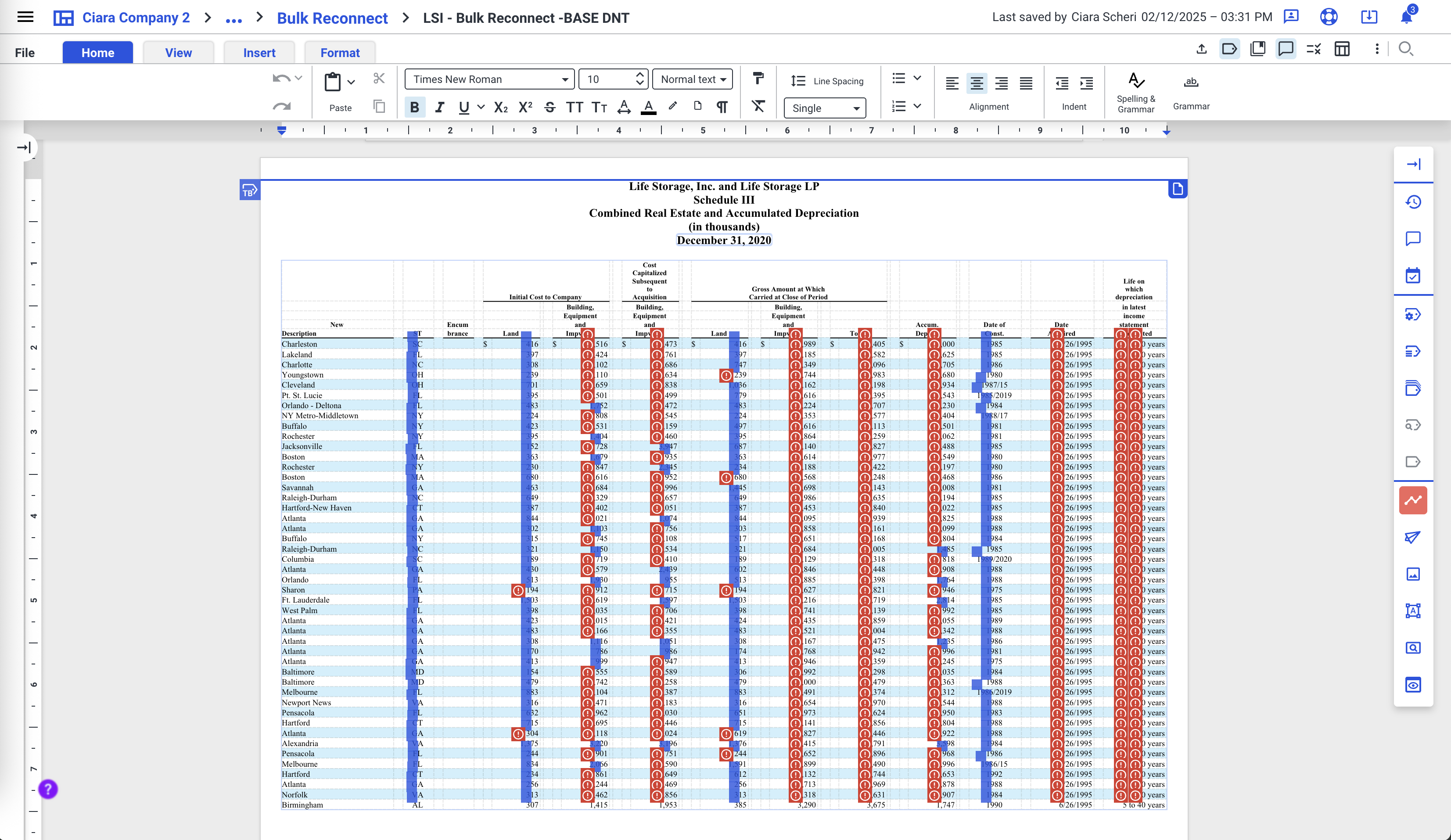
Solution
Engineering had a potential method where these dropped tags could be reconnected to their table.
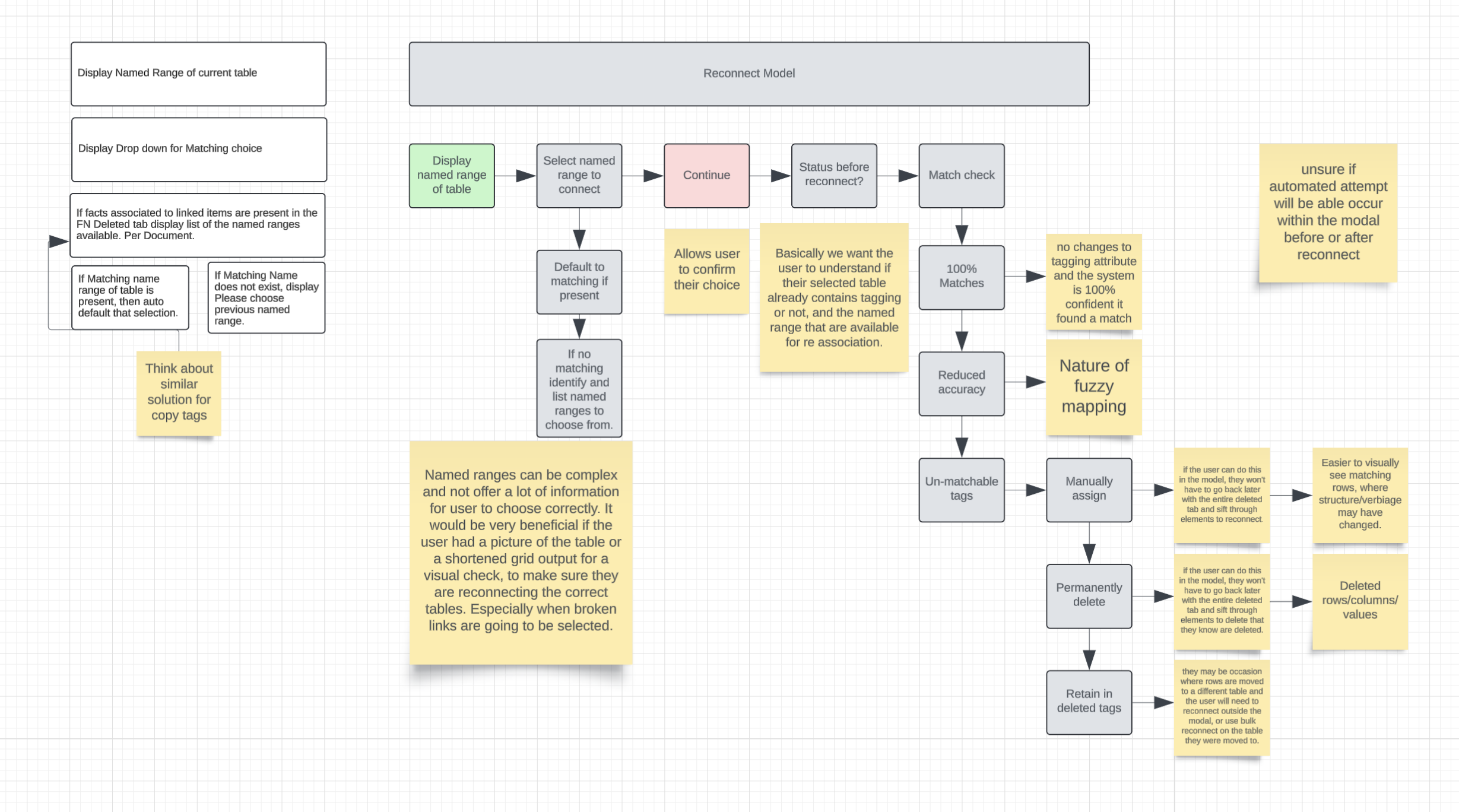
Building off our existing tagging workflows and UI components, design provided many rounds of options to land on a solution spanning various phases of release.

My Role
- Evaluate the established requirements with the main product stakeholder and present a variety of design options. The nature of this feature was such that engineering solutions could be shaped by design, so this design discovery phase was crucial to the effort.
- When a final design was agreed upon, I prototyped it, and segmented it out according to milestone releases.
Collaborative Actions
Many of the documents that clients compile require various users to add content, edit, review, and apply XBRL tagging. Due to restrictive timelines, the product must handle multiple users in the document at a time.
Co-Authoring
Problem
Multiple users could be in a project at a given time, however, there could not be two users actively making edits in a section at a time.
This causes the progression of a document to be slower, reducing overall potential efficiency for a project lifecycle.
Solution
Assist engineering in designing signals for total users in a document and section, including but not limited to UI signals as well as advising on experience logic.
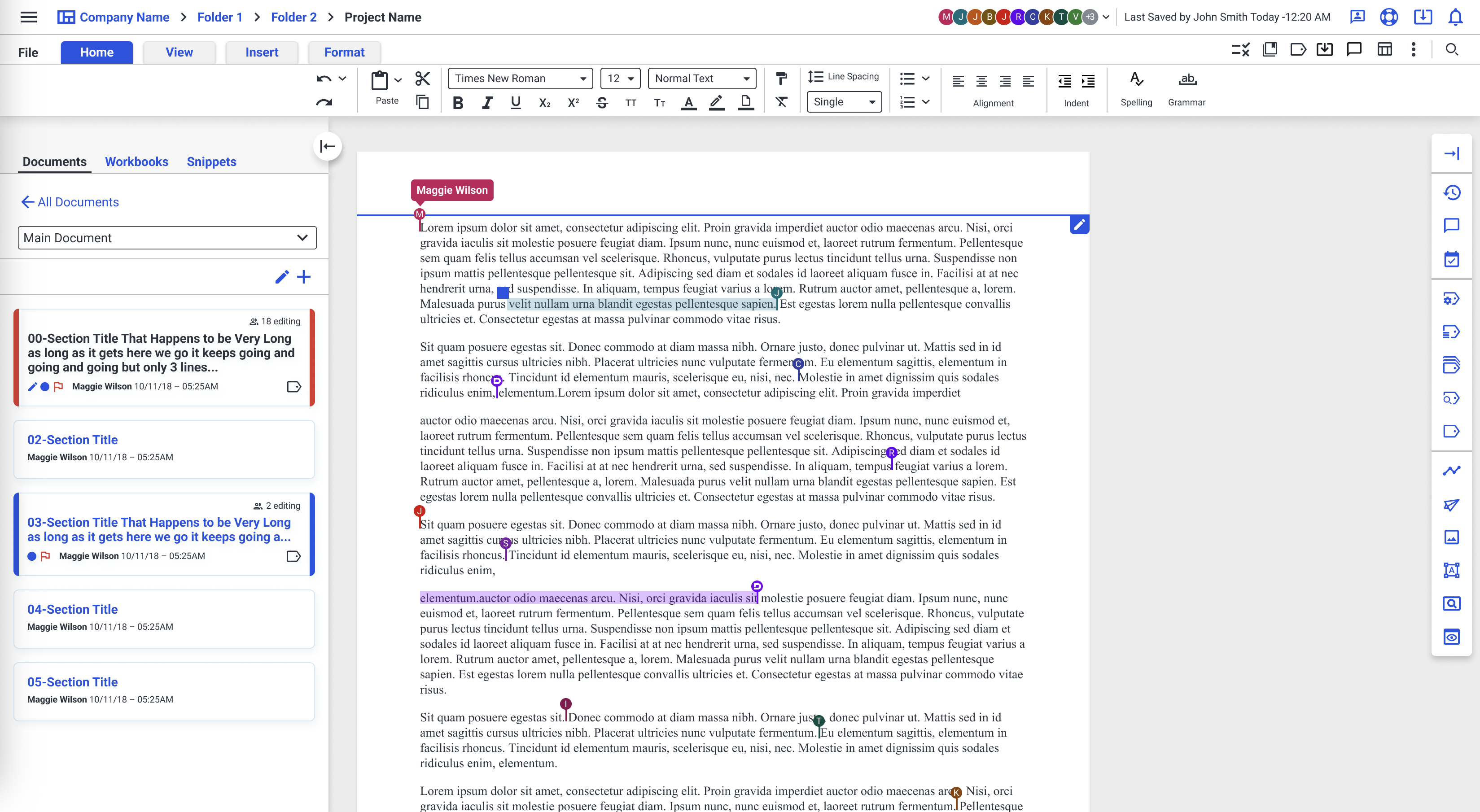
My Role
- Bridging multiple workstreams affected by this feature to provide answers and user experience design recommendations.
- Creating designs and prototypes to demonstrate desired interactions and functionality.
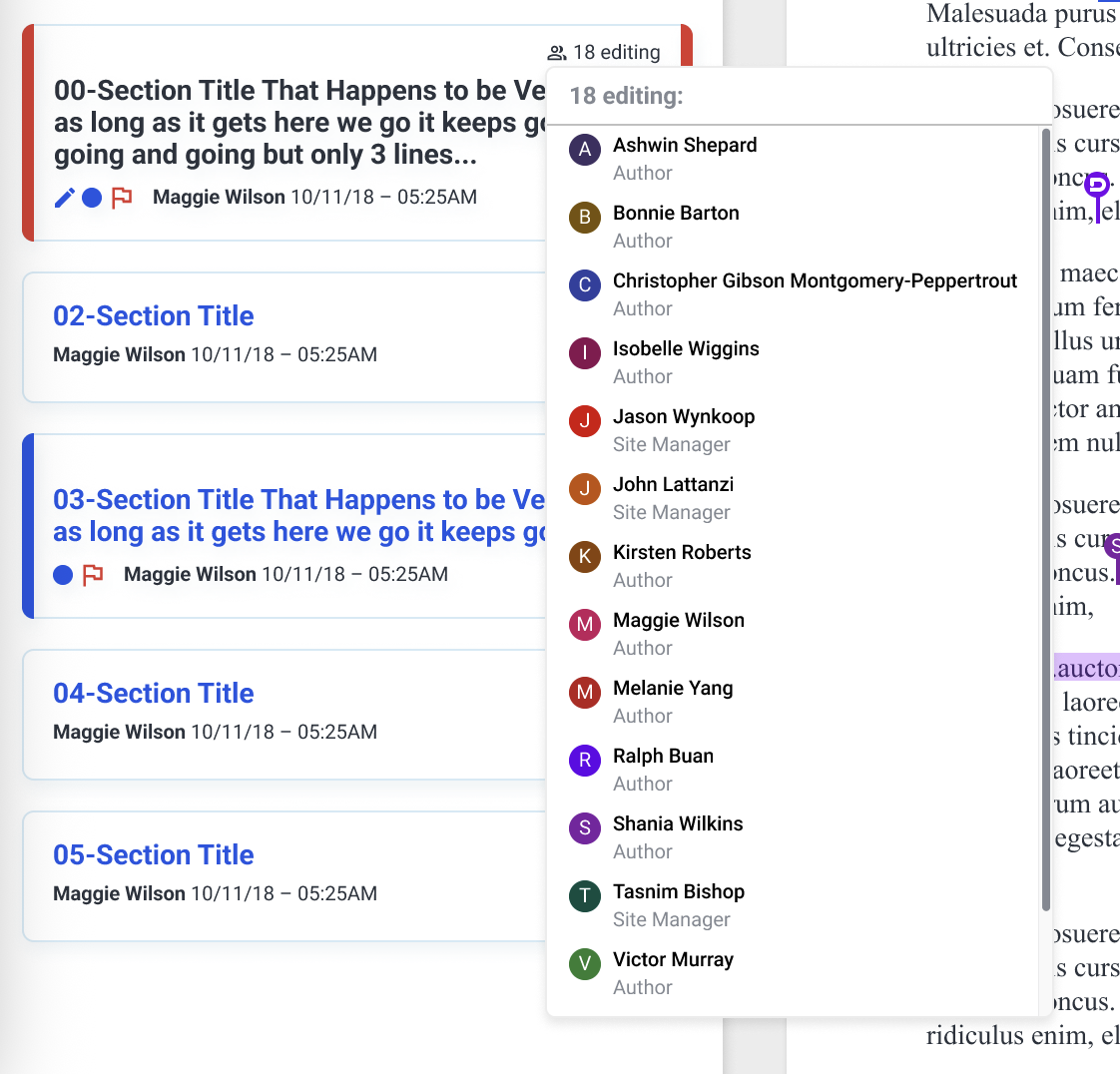
DFIN Active Disclosure Conclusion
- Design organization is key to success—maintaining a high design system standard in Figma has set up the design team to deliver artifacts efficiently and in detail. Documenting complex screens has helped newer designers onboard more quickly and contribute to a more efficient iterative design workflow.
- Stakeholder Collaboration- Trusting our product partners at Donnelley Financial as subject matter experts to help inform user flows, priorities, and expectations.
- User Centric- Understanding that many of our users expect detail, accuracy, efficiency and precision informs the decisions in for laying out experience and interface. Therefore, keeping in mind that many of ActiveDisclosure's users will prefer detailed user interfaces, particularly for document formatting and audit control.